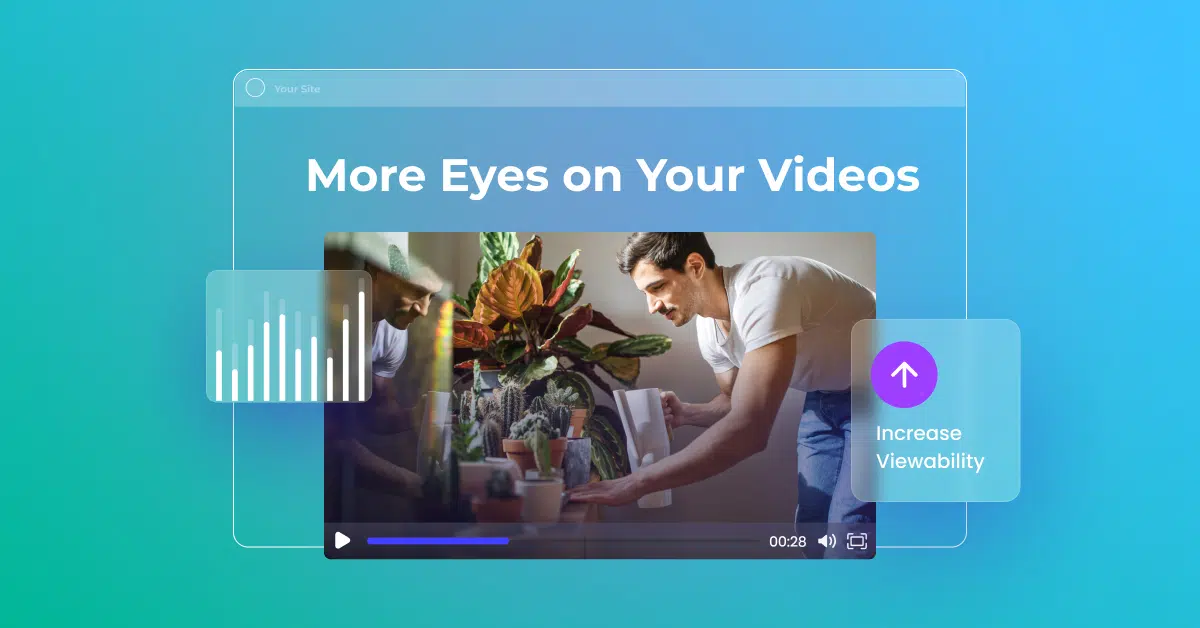Easy to implement and highly monetizable, adding video to your website is a no-brainer for publishers. Consumers watch hours of it every day, and brands are increasing their video budgets 20-50% annually. But, there are many variables that go into creating a successful video strategy that brings in the revenue you want to see, while maintaining a positive experience for your reader.
By tailoring a video strategy to your specific business, and placing video in highly viewable spaces on your site (above the fold, away from pop-ups, not hidden behind content), you’ll increase impressions, engagement, and ad revenue with ease.
Whether you’re a hard-hitting news site with lots of articles, or an influencer destination featuring galleries of inspiring photos, developing a video strategy that fits your site’s layout and content style is crucial to making it look native and user-friendly. Performing a site audit is a great place to start, as this will allow you to see where and how videos would perform best on your site.
Along with making decisions based on your website layout, knowing your audience and understanding how video can bring value to them is equally important. Assess where visitors spend time, which content is most popular, and what their journey looks like across your site. You can get more in-depth information by using heatmap tools to see where your audience is focusing on the page, and how video can fit into that experience.
There’s a balancing act when it comes to player size and user experience. Larger video players perform better on websites since their viewability is inherently greater, raising CPMs by 15-20% on average. Although these players are more lucrative, a poorly designed player might come across as bulky or disruptive to your reader. Finding the right player size for your site can be tricky, so you may need to test various sizes to achieve optimal results.
Sticky players are great options for publishers who are looking to maximize viewability without compromising user experience. Adopted widely by platforms like Facebook, YouTube, and iOS, these players adapt as readers scroll down a page, so that the larger player can shrink and expand depending on the user’s activity.
Autoplay is another quick win when it comes to viewability. Turning on mute-to-start allows your videos to be seen without any conscious effort by your audience, who -- full transparency -- aren’t coming to your site to watch your video ads, so the likelihood of them pushing play is small. Take control of this by having your video play automatically and fill your player with content that’s engaging and contextually relevant so your audience continues to watch.
Along with autoplay, making your player into a carousel can help keep your reader’s attention for longer. By showing more video options, viewers can watch multiple videos instead of just one. Longer dwell times equal more viewable impressions, which increases revenue from your player.

It can be challenging to keep load times low when adding new elements to your website. Some video players are clunky and tend to slow down sites, making lightweight video options more desirable. This is especially true when it comes to mobile, and its sometimes spotty bandwidth, which accounts for nearly two-thirds of global video consumption.
Not only will a lighter player improve your user experience, but it will also allow for faster loading ads which will increase the number of viewable impressions and revenue coming in from your player.
Not all video players are made equal. It starts with the team behind the screen that you’ll be working with to optimize your website and provide video that delivers results. The video monetization space is crowded these days which can make it harder to weed through providers.
To start, you’ll want to consider working with a company that’s invested not only in the advertising side of things, but one that is also knowledgeable about content. Using players that have been adopted by editorial teams, and having your video look native and content-forward, will improve UX and dwell times, creating more revenue opportunities.
Along with content, strong tech skills and support can take your video a long way. Find a provider that supports multiple formatting options so that the video player can fit into your existing website while being highly viewable.
From user experience to maximizing revenue, viewability has a massive impact on video performance.
Check out our new ebook, The Science of Video Viewability and Beyond: A Publisher's Guide to Maximizing Ad Revenue to get more tips, tricks, and insights on video monetization and viewability, including exclusive perspectives from digital leaders at VICE Media Group, HuffPost Spain, GroupM/IBM, MediaCom, and more.


